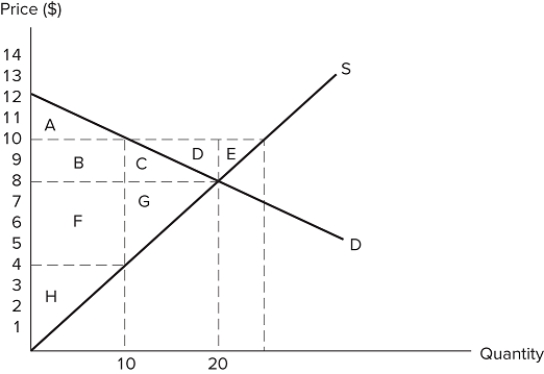Multiple Choice
 According to the graph shown, if the market goes from equilibrium to having its price set at $10 producer surplus will change:
According to the graph shown, if the market goes from equilibrium to having its price set at $10 producer surplus will change:
A) from (F + G + H) to (B + C + D + E + F + G + H) .
B) from (F + G + H) to (B + C + F + G + H) .
C) from (F + G + H) to (B + F + H) .
D) from (C + G) to (B + C + F + G + H) .
Correct Answer:

Verified
Correct Answer:
Verified
Q37: When a perfectly competitive, well-functioning market is
Q38: <img src="https://d2lvgg3v3hfg70.cloudfront.net/TB8194/.jpg" alt=" Assume the market
Q39: Each seller's opportunity costs are:<br>A) determined monetarily,
Q40: <img src="https://d2lvgg3v3hfg70.cloudfront.net/TB8194/.jpg" alt=" Assume the market
Q41: <img src="https://d2lvgg3v3hfg70.cloudfront.net/TB8194/.jpg" alt=" Assume the market
Q43: <img src="https://d2lvgg3v3hfg70.cloudfront.net/TB8194/.jpg" alt=" Assume the market
Q44: <img src="https://d2lvgg3v3hfg70.cloudfront.net/TB8194/.jpg" alt=" Assume the market
Q45: Assume there are three bakeries, each willing
Q46: The market to buy and sell organs
Q47: Assume there are three hardware stores, each